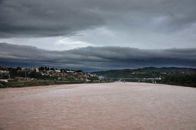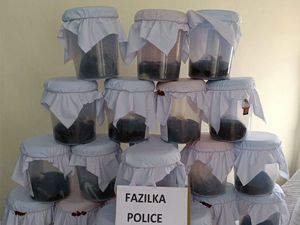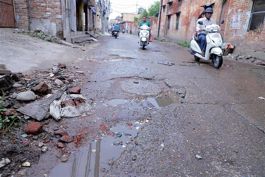
Photo for representation purposes.
Vijay Mohan
Tribune News Service
Chandigarh, January 12
Changing meteorological trends and climatic variables in arid regions of Haryana over the past 45 years has shown an increase in the yield of kharif season crops, which may indicate further increasing trends if other factors are not limiting, a new study claims.
Analysis of yield data from 1972-2016 revealed that cotton lint yield increased at a maximum rate of 17.5 percent, followed by pearl millet at 7.8 per cent, rice at 3.1 per cent and barley at 2.7 per cent. No significant trend, however, was observed in wheat, gram and pigeon pea yield during the study period. The increasing trend in yield was found to be more in kharif season crops as compared to the same during rabi season.
The study was undertaken by five experts from the CCS Haryana Agricultural University, Hisar, and Central Soil Salinity Research Institute, Karnal, and published recently by the India Meteorological Department. The purpose was to determine long-term trends in evapo-transpiration, its explanatory weather variables and ultimate effect on the yield of major crops of the arid ecosystem in south-western Haryana.
During the last 45 years wind speed declined at a rate of five per cent while sunshine hours and reference evaporation declined at a rate of 3.3 per cent and two per cent, respectively, the study states.
Further, the minimum temperature increased at 1.8 per cent and an average rainfall deficit of 1,122 mm over evapo-transpiration (ET) was observed although it registered a declining trend owing to reduction in ET.
The Hisar region was chosen for the study because it is typically arid but still one of the most agriculturally active regions of Haryana. It represents the western agro-climatic region of Haryana with hot summers and chilling winters, with 80 per cent of its annual precipitation being received in just three months from July to September during the south-western monsoons.
Ambient weather parameters of a region have a direct impact on productivity of crops grown in that area and several studies have pointed out variations in crop yield due to fluctuation in weather variables. These fluctuations are pronounced in arid and semi-arid areas as these are more sensitive to climate change and variability. Change in weather variables is bound to influence ET, which also reflects plant water requirements and serves as an important input for planning irrigation systems.
According to the researchers, decrease in ET has been reported since 1950 in many parts of the world which is contrary to common belief that global warming and increasing temperatures will increase terrestrial evaporation. However, this decrease in ETO is not universal and contrary results from some areas have also been reported.
Join Whatsapp Channel of The Tribune for latest updates.



























